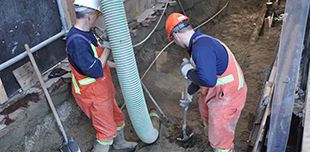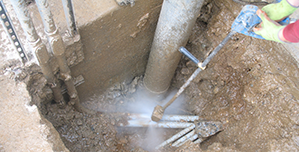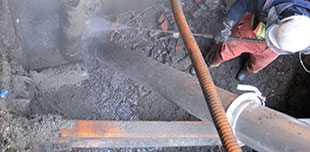Edenflo has been in the industry of cleaning septic systems for a while, making the business one of the trusted names in property management companies in British Columbia, Canada.
Employing a fleet of tandem axle vacuum trucks, Edenflo offer a wide range of property management services such as catch basin and sump cleaning, inspection, and preventive maintenance. Edenflo recently expanded its list of property management services, adding high pressure flushing and hydro excavation to the company’s roster of service jobs.
High Pressure Flushing
High pressure flushing removes sludge, silt and other debris from the sewer system and drain lines. This latest offering by Edenflo is a preventive measure that helps homeowners make the most of their septic tanks by increasing the efficiency of the systems.
This type of service saves customers money by preventing the overflowing of the septic tank. High pressure flushing is an environmentally-sound procedure wherein regular water is propelled through pipes and hoses to get rid of the waste buildup (such as grease, sludge and mineral deposits) on septic walls.
Hydro Excavation
A combination of high-pressure water and air vacuum, Edenflo uses the hydro excavation process to break down the soil in order to find underground utilities such as septic tanks.
Traditional excavation proved to be dangerous to the lives of workers, and hydro excavation is a very good alternative solution to uncovering facilities below the ground.
In Canada where the soil freezes during wintertime, hydro excavation using hot water is very useful. Manual digging is near to impossible, but the hydro excavation process allows worker better damage and control. It is also the preferred method for line installation trenching and creating landscape features.
Edenflo has gone a long way in the property management field. Through the company’s various services, homeowners can have peace of mind knowing that their septic tank and other sewage systems are in excellent condition.










